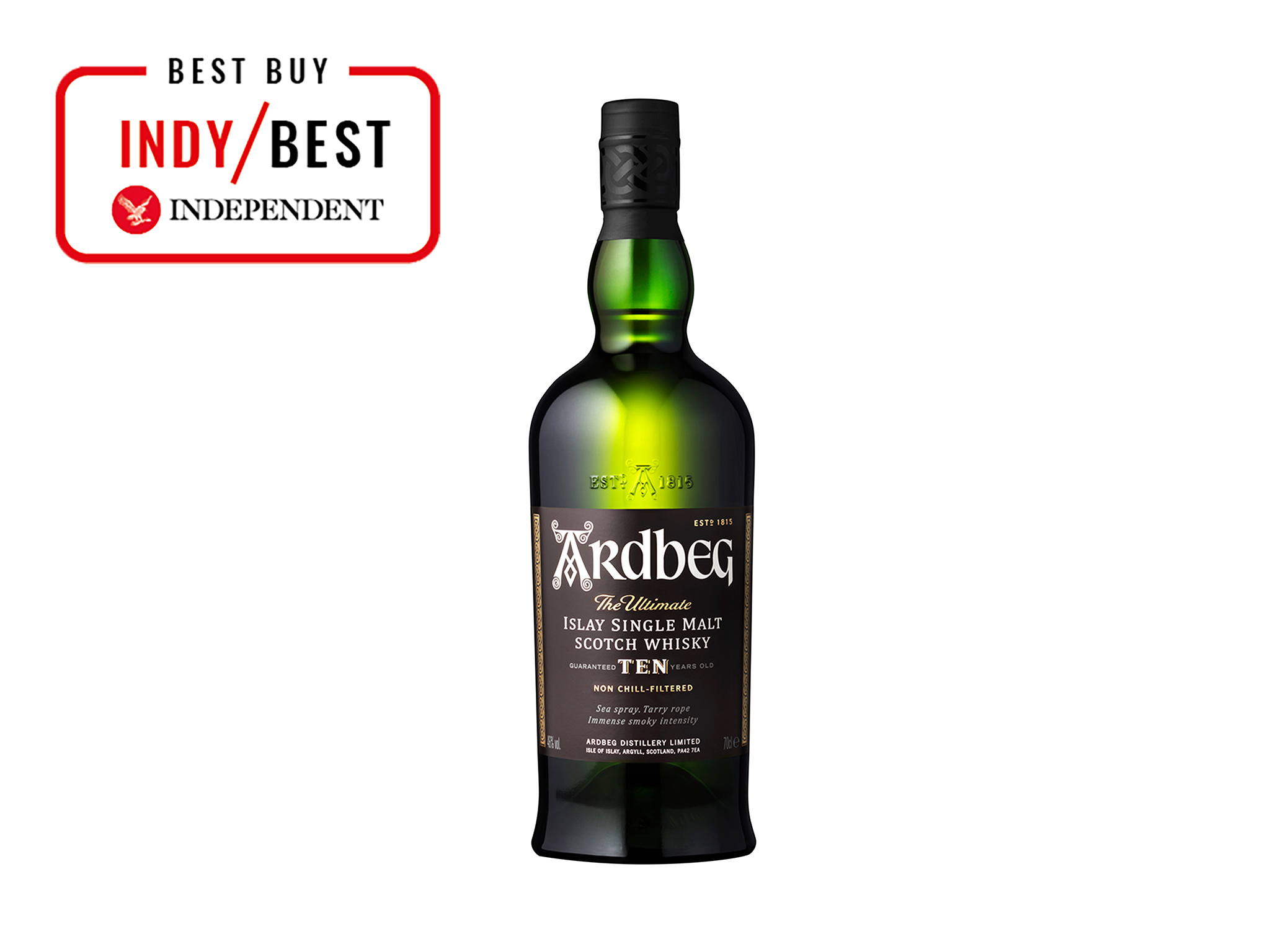
The Independent's journalism is supported by our readers. When you purchase through links on our site, we may earn commission. Why trust us?
World Whisky Day 2022: The best peated whiskies, from Scotland to Japan
Notable new releases vie with old classics in our expert round-up
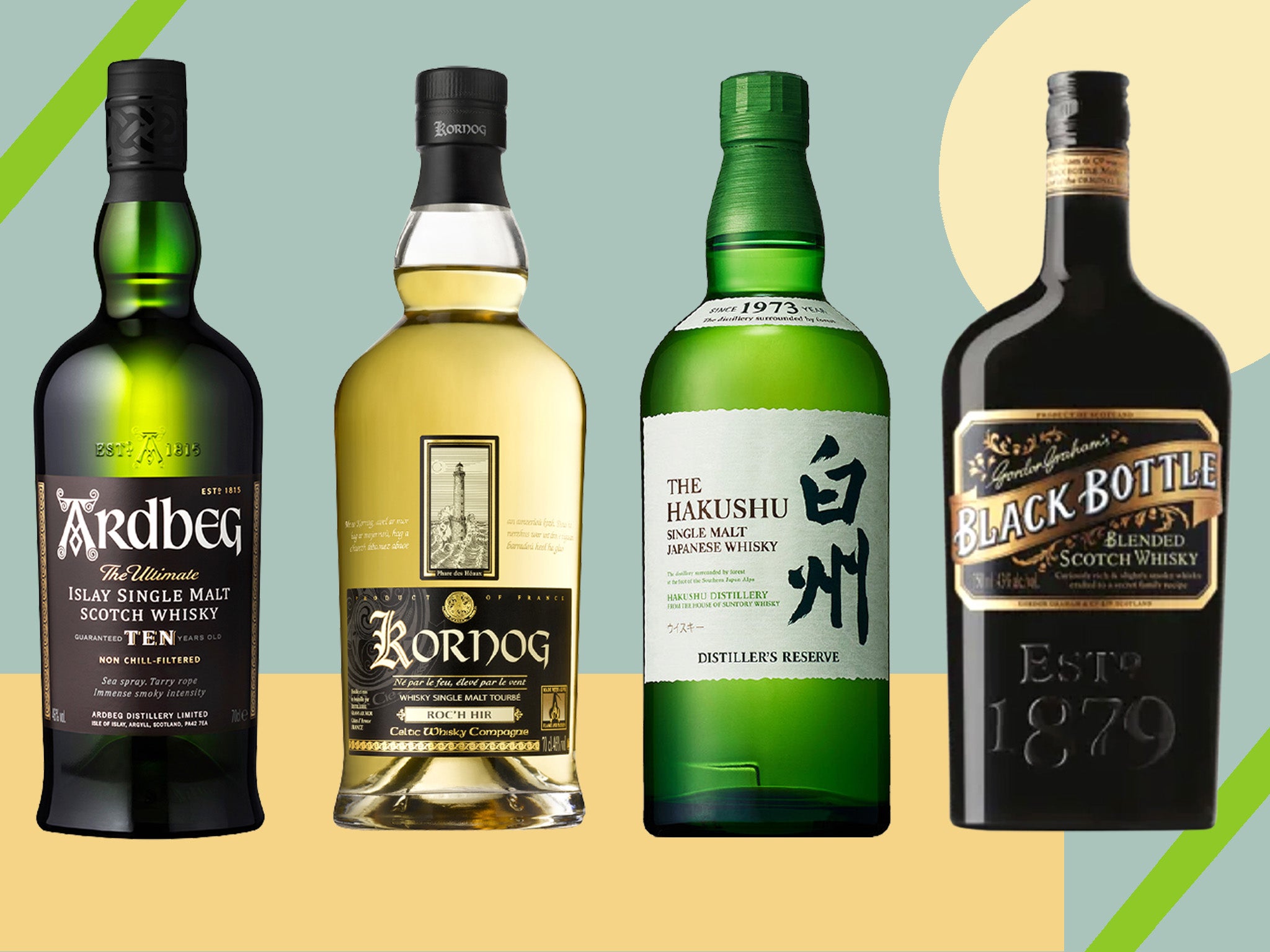
One of the key skills a whisky distiller or blender must master when creating a new expression is an ability to tease exciting, new flavours out of their spirits within the restricted ingredients and production methods permitted.
To emphasise their whiskies distinctiveness, distilleries tend to promote as many unique aspects about their products as they can: what casks the whisky has been finished in; how the proximity of sea lends their expressions a unique character; or why their local source of water is more vital than anyone else’s. When you’re dealing in malted barley, water, yeast, oak and nothing else, it’s quite a challenge to throw the flavour in a totally new direction.
There is, however, one other ingredient that whisky’s lawmakers allow, and it has been used for centuries: peat. The practice harks back to the days when burning peat was the most effective source of heat for the kilns that were used to dry grains – particularly on Scottish islands such as Islay – resulting in an array of smoke and mineral flavours being imparted into the finished whisky.
These days, of course, there are more efficient ways to heat up a kiln, but peated whisky is still as popular as ever and distillers continue to work with peat-smoked grains. Not just in Scotland, but around the world.
You’ll find single malt whiskies that are peat-laden smoke bombs, or, indeed, blends that have the subtlest input from the peat palette. To give you an idea of the range available, below we’ve rounded up 10 of our favourites.
Read more:
How we tested
To come up with this selection we lined up some notable new releases alongside several old classics and merrily supped over the course of three weeks. Besides looking for exceptional whisky-making, we wanted our list to showcase the range of styles available. We have also kept an eye on price, with most entries pitched towards the more affordable end of the market.
The best peated whiskies for 2022 are:
- Best overall – Ardbeg 10-year-old: £39.50, Masterofmalt.com
- Best European whisky – Celtic Whisky Distillery Kornog: £79, Glenbotal.co.uk
- Best for maximum peat – Lagavulin 16-year-old: £74.95, Thewhiskyexchange.com
- Best for heater peat – Highland Park 15-year-old viking heart: £79.90, Thewhiskyworld.com
- Best for cocktails – Gordon Graham’s black bottle: £21.95, Drinksdirect.com
- Best for a haggis supper – Talisker 8-year-old special release: £89.95, Thewhiskyexchange.com
- Best innovative world whisky – Milk & Honey elements peated: £51.95, Thewhiskyexchange.com
- Best for mellow peat – Old Pulteney Huddart: £44.75, Thewhiskyexchange.com
- Best blended whisky – Compass Box peat monster arcana: £77, Lochfynewhiskies.com
- Best for subtle peat – The Hakushu distiller’s reserve: £70.95, Thewhiskyexchange.com
Ardbeg 10-year-old

Best: Overall
Rating: 10/10
- ABV: 46%
- Size: 70cl
- Region: Islay, Scotland
- Style: Single malt
Ardbeg, like several of its neighbouring Islay distilleries, is known for its heavy use of peat in whisky production. A favourite among collectors, some older releases achieve vast sums of money at auction, so it seems like a steal to be able to get such a classic example as this 10-year-old for under £40.
Give it a sniff and your senses will be instantly full of smoke and TCP aromas, announcing the big hit of peat that’s to follow when you first sip. Although it’s something of a smoke bomb in the mouth, it’s not the kind of heavy drink that makes you want to douse the flames. There’s a light touch to it that allows citrus and vanilla flavours to share some of the limelight, while you get to explore various big, briny peat flavours in all their detail.
Celtic Whisky Distillery Kornog
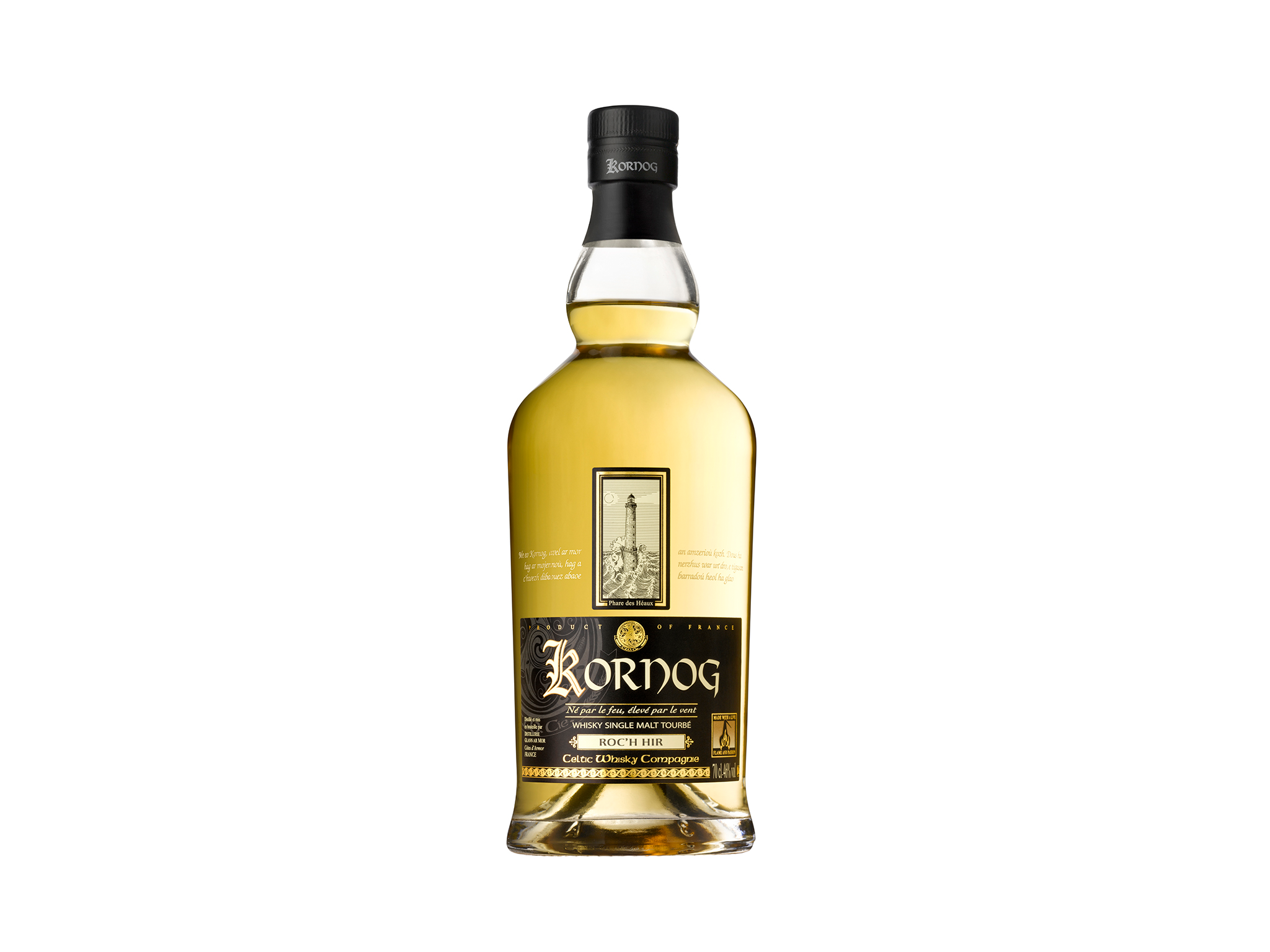
Best: European whisky
Rating: 9/10
- ABV: 46%
- Size: 70cl
- Region: France
- Style: Single malt
We don’t hear much about French whisky in the UK, but anyone wishing to investigate what’s being produced across the Channel should head for Brittany, where one of the country’s best distilleries resides. Founded in 1997 under the name Glann Ar Mor, it is a pioneer of French whisky, marrying Breton craft with Scottish tradition, and is set to become more widely available in the UK.
Kornog (translation: “the west wind”) is a top-notch peated whisky with a strong smoky character and a medicinal tang, blending nicely with pepper and ginger spices, some sweet fruit, and vanilla. Although the peat is quite prominent, the sweet and spicy flavours balance out some of its intensity to make it a very sippable drink.
This one is supposed to be on The Whisky Exchange soon, so keep a lookout.
Lagavulin 16-year-old
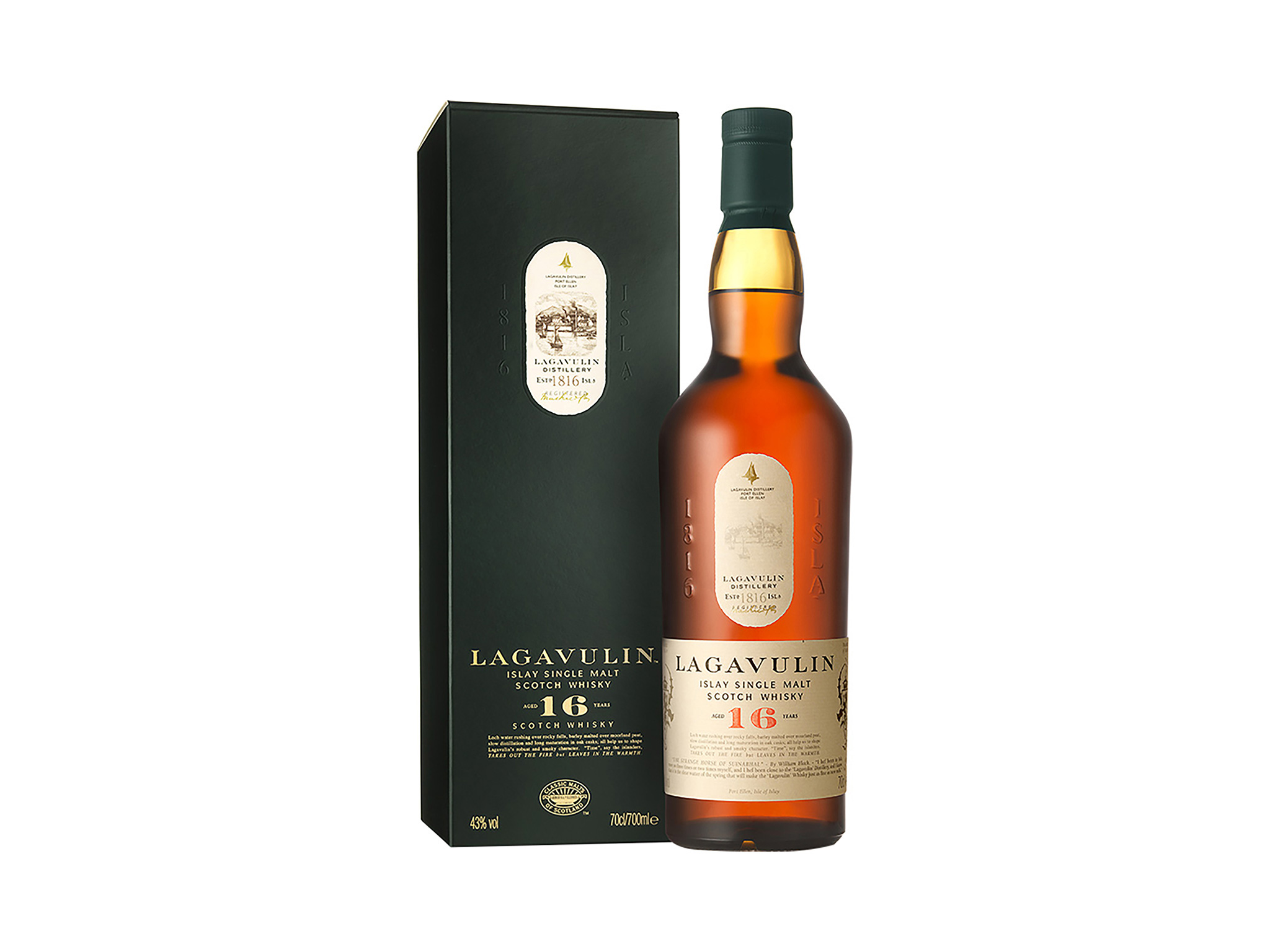
Best: For maximum peat
Rating: 10/10
- ABV: 43%
- Size: 70cl
- Region: Islay, Scotland
- Style: Single malt
Peated whisky polarises opinion, but few bottles reach the extremes of both love and hate as much as Lagavulin’s 16-year-old. There are countless enthusiasts who will declare it their favourite of all time, but its peaty overtones can be a lot.
In Lagavulin’s hands, the peat notes morph into all manner of flavours, from tobacco and smoky tea to iodine, wood preservative and salty kippers. And there’s nothing subtle here – despite the fruity and sweet flavours that have a richness brought about by 16 years of ageing, the intensity of peat doesn’t let up from the moment the bottle is uncorked until long after you’ve finished sipping. It’s a dry, complex drink and we most definitely love it.
Highland Park 15-year-old viking heart

Best: For heather peat
Rating: 8/10
- ABV: 44%
- Size: 70cl
- Region: Orkey, Scotland
- Style: Single malt
The peat on Hobbistor moor on Orkney has more heather in its composition than the peat from Islay, which subtly shifts the flavour imparted on the malts used by the island’s distillery, Highland Park. This new release has spent a long time in sherry seasoned casks, giving it background flavours of sweet sponge cake and juicy fruit for the peat smoke to intertwine with. The smoke is quite mellow and, along with some dried herbal notes, it has an earthy quality to it that reminds you that peat comes from beneath the surface of the land.
The unusual embossed ceramic decanter is inspired by earthenware whisky containers found at the distillery, which dates back to 1798: much like the whisky and peat that helps flavour it, this is very much a product of Orkney.
Gordon Graham’s black bottle
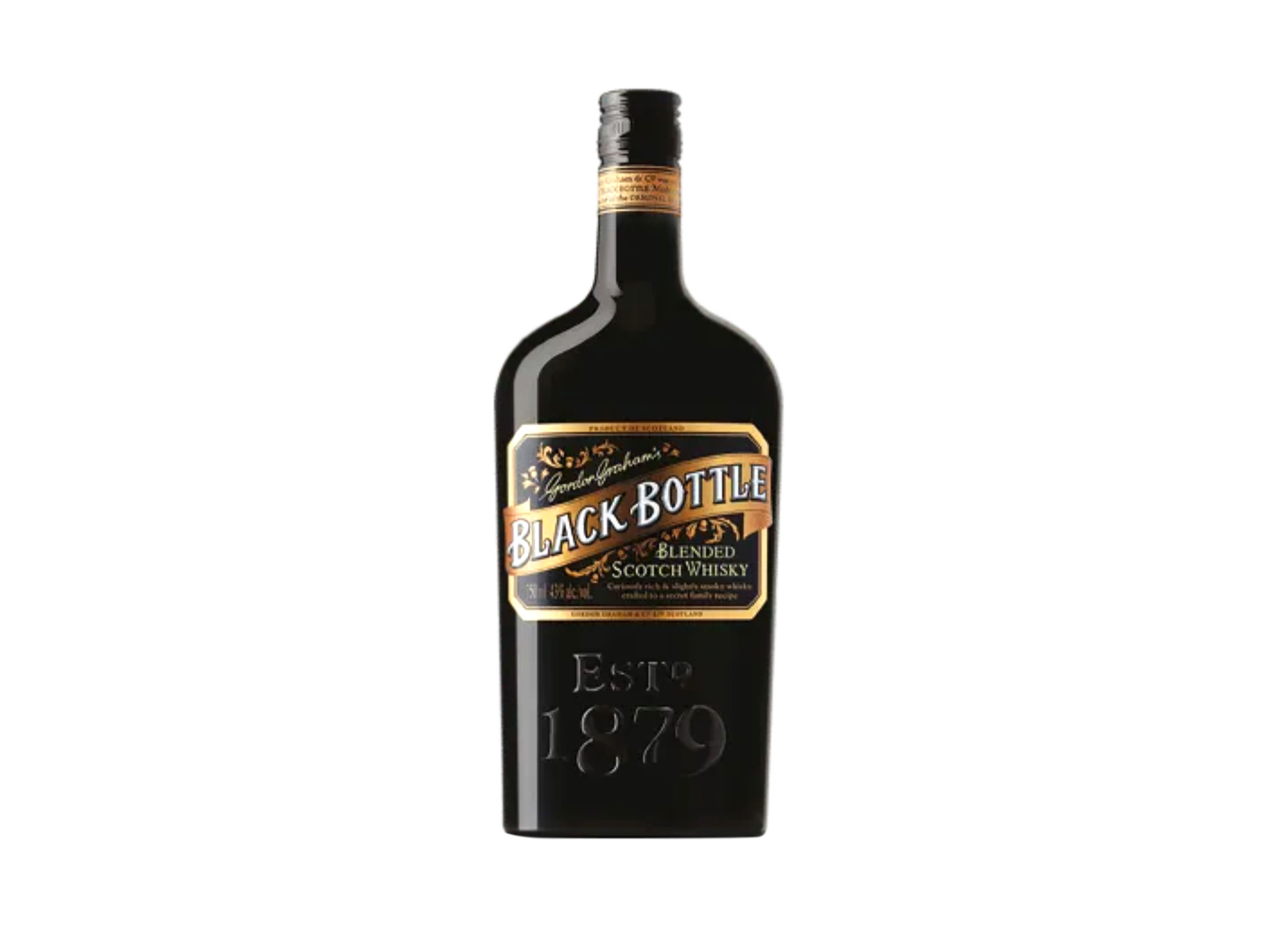
Best: For cocktails
Rating: 7/10
- ABV: 40%
- Size: 70cl
- Region: Scotland
- Style: Blended
The Black Bottle brand dates back to 1879, when tea blender Gordon Graham turned his attention to something a little stronger. After changes in ownership over the subsequent years, it is currently enjoying a revival. This is a blend of single malt and grain whiskies, with Islay providing some smoky peat character, while a double maturation in virgin oak casks helps punctuate the flavours with spicy wood notes.
It has a smooth honey sweetness and those smoky flavours are gentle and warming, lingering on the palate with the spice. It’s a great-value blended whisky, perfectly suited to sipping neat, but we think it makes a great choice for anyone wanting to add a touch of smoke to their whisky cocktails. Give it in a run in a Manhattan or simply serve with cola, soda water or ginger ale for a longer sip.
Talisker 8-year-old special release
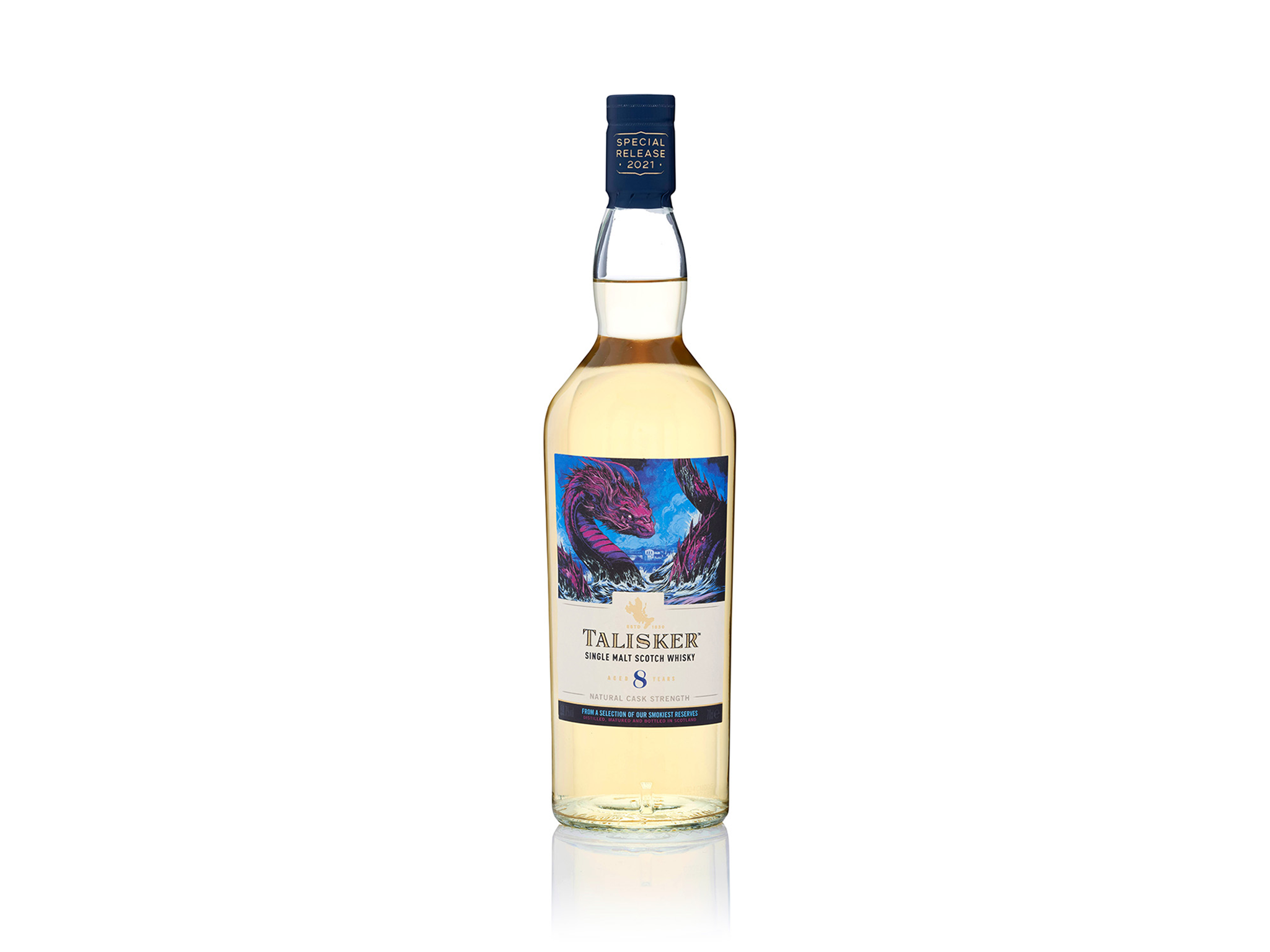
Best: For a haggis supper
Rating: 9/10
- ABV: 59.7%
- Size: 70cl
- Region: Isle of Skye, Scotland
- Style: Single malt
This limited-edition whisky forms part of Diageo’s eagerly anticipated annual special releases collection, with the 2021 range of eight bottlings going under the “legend’s untold” banner. Talisker’s peated whiskies are noted for their briny and spicy flavours that are often described as “salt and pepper”, and it’s the bold, assertive qualities of this combination that makes them regularly picked out as the best whisky to drink with haggis.
Those characteristics are to the fore in this release, with intense smoke and salty sea air washing through an oily texture. Hints of fruit sweetness and a minty herbal character are present at first but, although they don’t get totally obliterated, this whisky is all about the smoke-infused blast of sea salt and hot, spicy pepper.
Milk & Honey elements peated
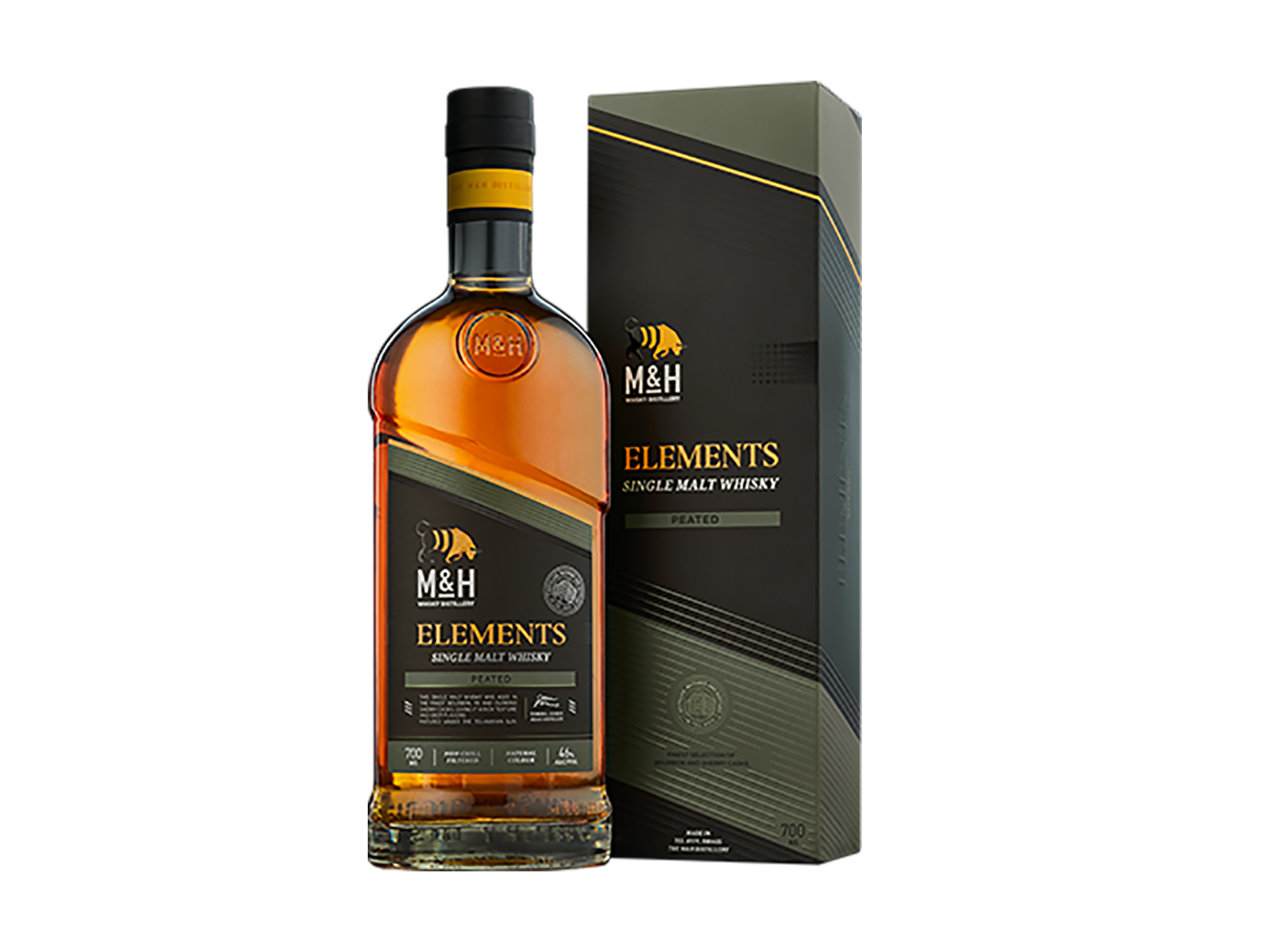
Best: Innovative world whisky
Rating: 8/10
- ABV: 46%
- Size: 70cl
- Region: Israel
- Style: Single malt
Milk & Honey is one of the most exciting distilleries in the world, taking advantage of Israel’s long sunny days and the Mediterranean climate to help its whisky mature quickly.
This peated whisky, which is part of the “elements” series, takes the brand’s exceptional classic single malt and matures it in four casks, including ex-Islay, to give it a peaty character. It’s full of sweet, honeyed vanilla and oak flavours with a delicate touch of peat that helps to release some earthier notes. There’s a noticeable taste of lemon peel throughout, but especially at the finish where it is met with lingering oak, slightly scorched from those subtle smoky flavours. It makes for a gentle introduction to the flavours of peat while exploring some of the whisky-making magic available from beyond traditional distilling nations.
Old Pulteney Huddart
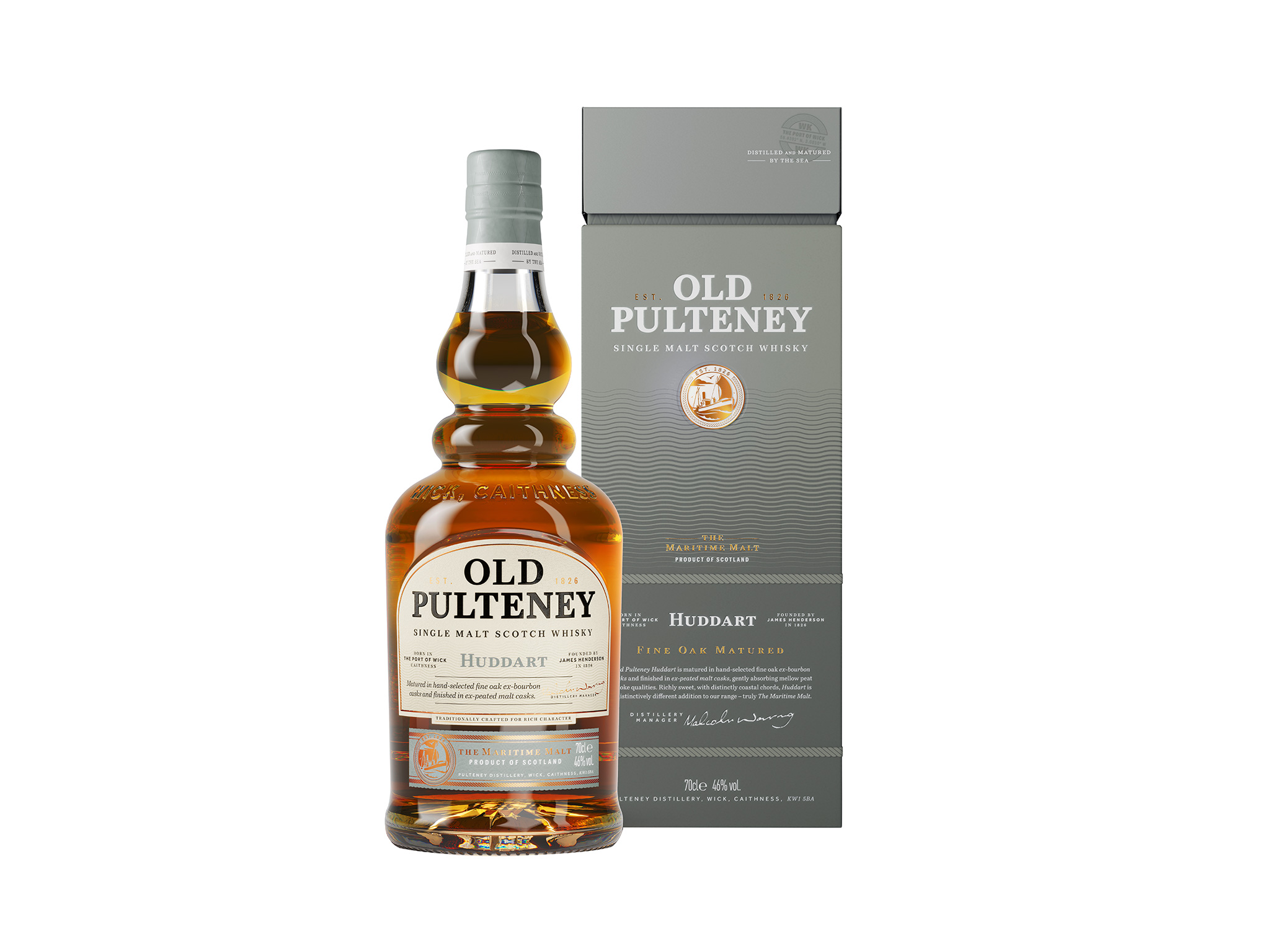
Best: For mellow peat
Rating: 7/10
- ABV: 46%
- Size: 70cl
- Region: Highlands, Scotland
- Style: Single malt
Old Pulteney produces a range of products that are great for the first-time whisky drinker: accessible to most tastes and produced with exceptional quality at great prices. Huddart is one such whisky and it acts as a good introduction to peat. The smoky flavours are produced by taking whisky aged in ex-bourbon barrels and finishing it in ex-peated malt casks – a method that imparts a mellower kind of smoke than whiskies distilled from heavily peated malt.
It’s a non-age statement whisky, and there’s a vibrant freshness of youth to the flavour, with plenty of vanilla and peppery spice to fill the mouth. Like other Old Pulteney releases, it’s a drink that has a distinctively briny, coastal air to it, and the bonfire and ash notes of the peat add an extra layer of warmth against the nautical elements.
Compass Box peat monster arcana

Best: Blended whisky
Rating: 8/10
- ABV: 46%
- Size: 70cl
- Region: Scotland
- Style: Blended
When Compass Box was founded 20 years ago it set about producing exciting new Scotch whiskies with a focus on flavour, rather than obsessing about each drink’s age. The brand’s blends show huge innovation and creativity, often pushing the boundaries of what a Scotch whisky can be.
One of their biggest successes is the peat monster – a rich whisky with a full range of peat flavours – and to celebrate the company’s 20th anniversary, it’s added even more layers of complexity with a limited-edition release. With some additional time spent in French oak casks, this whisky has more pronounced spice flavours, while the strong smoky notes mingle with creamy chocolate and waxy lemon before drying to a long, lingering finish.
The Hakushu distiller’s reserve
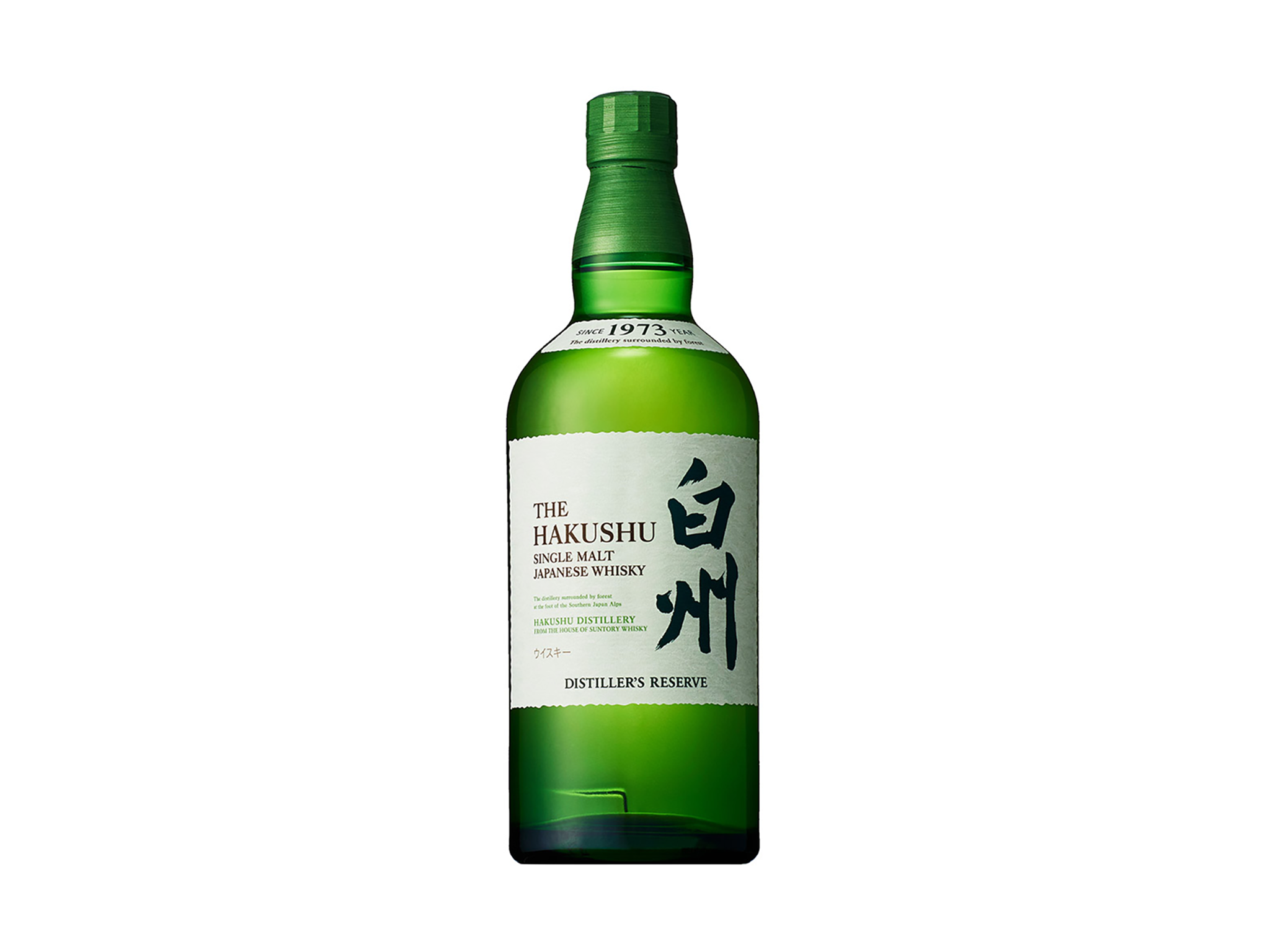
Best: For subtle peat
Rating: 8/10
- ABV: 43%
- Size: 70cl
- Region: Japan
- Style: Single malt
Japanese whisky is noted for its artistry in combining whisky from various casks to produce spirits that have a touch of elegance. For Hakushu’s distiller’s reserve, peated whisky is just one of the many flavours from the blender’s palette, and it imparts the subtlest hint of smoke to the overall picture.
It’s very much a fresh, green whisky, with grassy and herby with touches of zesty pine and lemon sweetness adding to the overall brightness. It’s so fresh and easygoing that at first you might not notice the smoke lingering in the background, but it becomes more obvious at the finish without ever overpowering those delicious green hints.
The verdict: Peated whisky
There are many new distilleries currently producing incredibly good peated whisky, but for our pick we’ve gone to peat’s traditional home, Islay, and a distillery that packs in more flavour than most – Ardbeg. Its 10-year-old is a true classic – supreme quality at a very reasonable price.
Voucher codes
If you’re a whisky-lover, why not treat yourself to one of the best whisky advent calendars
